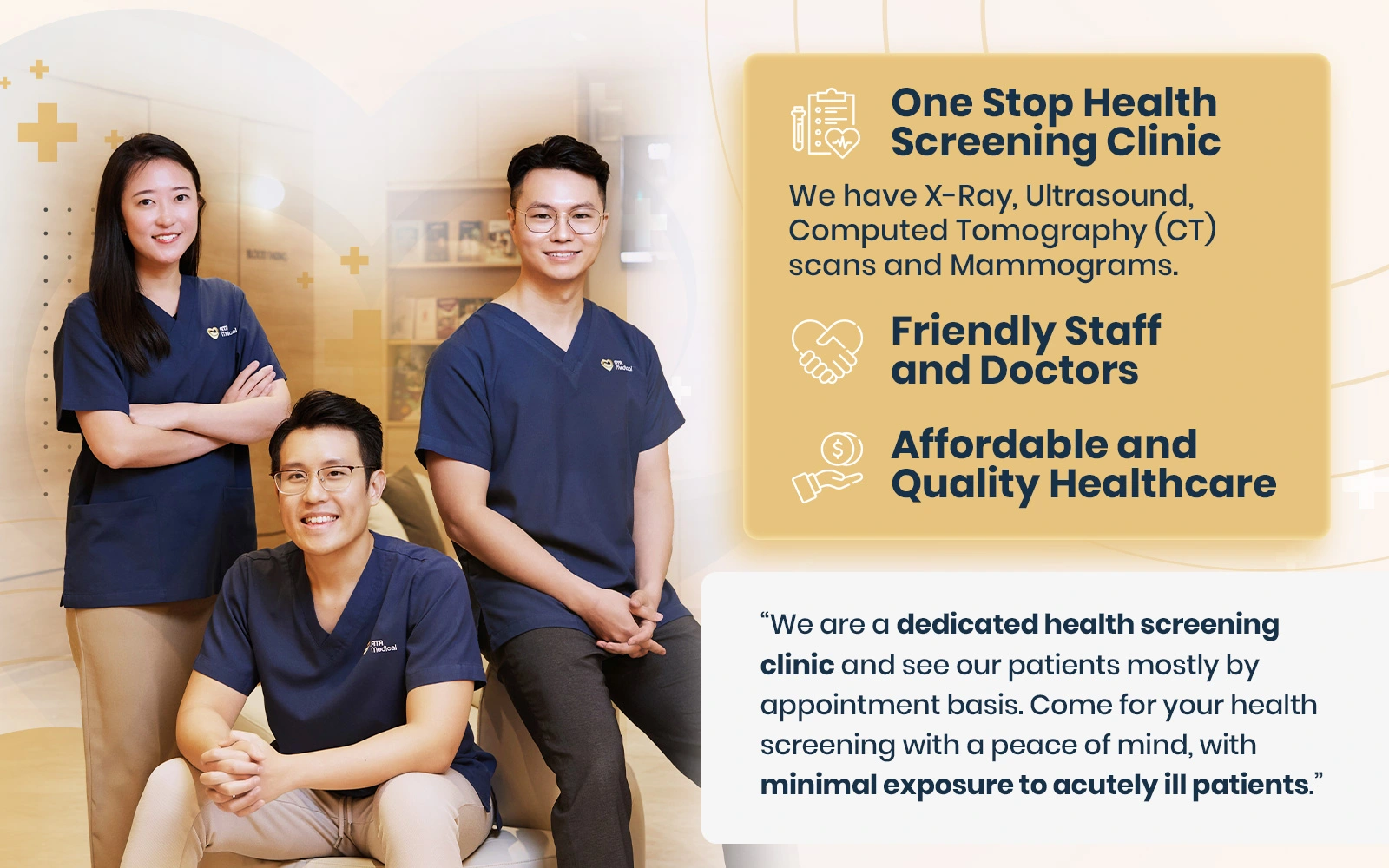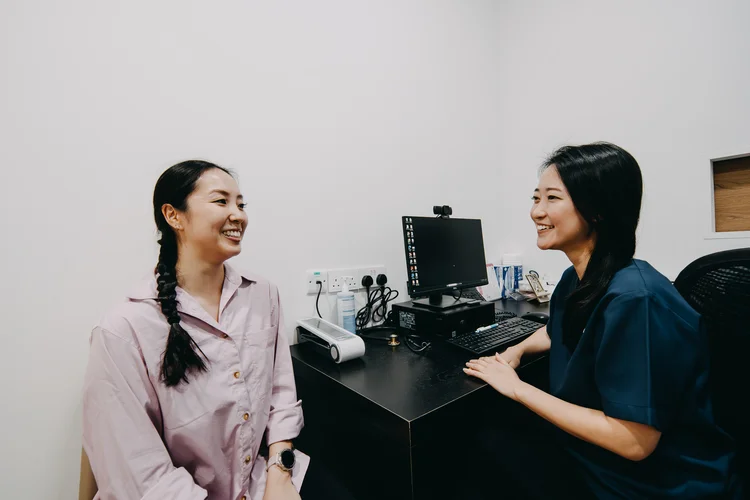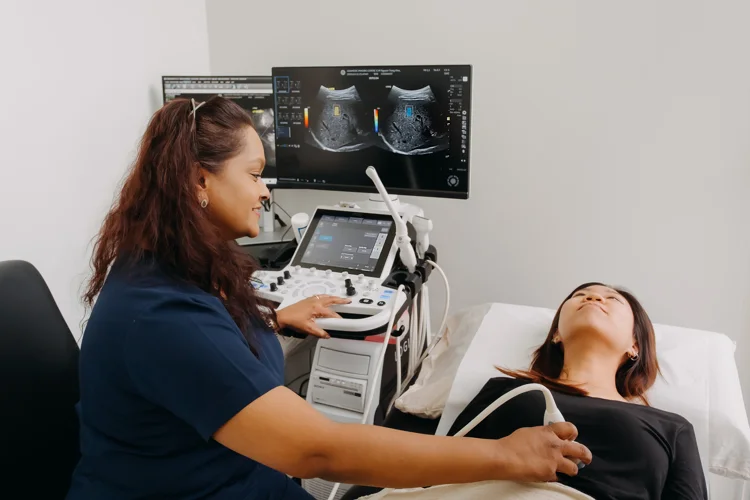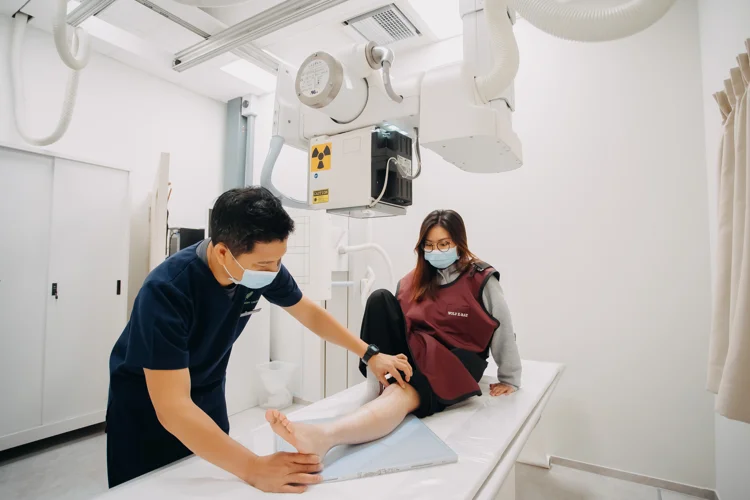When Should I Test for STDs?
If you are sexually active, testing for sexually transmitted diseases (STDs) is an essential step in safeguarding your sexual health. Risk factors like multiple partners, unprotected sex, or a history of STDs increase the likelihood of infection. Routine screenings can also help to detect asymptomatic infections, enabling timely treatment and preventing complications. Knowing when to test empowers you to maintain a healthy lifestyle and peace of mind.


Who Should Get Tested for STDs?
Testing is recommended for everyone at least once, but some individuals should consider testing more frequently, including those who:
- Have new or multiple sexual partners
- Engage in casual or unprotected sex
- Are living with HIV
- Are women aged 21 and above, or under 25 and sexually active
- Are pregnant
In Singapore, this is especially important for young adults, given that those aged between 20 to 34 years had the highest rate of STIs in 2017 according to a Ministry of Health (MOH) report.

STD Window Periods
The "window period" is the time between potential exposure to an STD and when the infection can reliably be detected by a test. During this period, the body may not have developed enough detectable markers, such as antibodies or DNA from the pathogen, for tests to identify the infection. Testing too early may lead to false negatives, so it’s important to wait until the appropriate time for each STD. Here's an overview of window periods for common STDs:
| STD | Window Period |
|---|---|
| Chlamydia and Gonorrhoea | 24 hours to 6 days |
| Syphilis | 3 to 6 weeks |
| Herpes | 4 to 6 weeks |
| Hepatitis B | 6 weeks |
| HIV | 14 days |
Disclaimer: This information is for educational purposes only. If you are unsure about the timing of your test or suspect exposure to an STD, consult a doctor for personalised advice and accurate testing recommendations.
Common STD Symptoms
Common symptoms of STDs include:
- Unusual genital discharge
- Pain or burning sensation during urination
- Sores, ulcers, or blisters around the genital area or mouth
- Rash or itching in the genital region
- Swollen lymph nodes, particularly in the neck or groin
- Fever or flu-like symptoms
- Fatigue
- Unexplained weight loss
These symptoms vary depending on the type of STD and may also be associated with other health conditions. If you are experiencing them and are concerned about a possible infection, seek medical attention for a precise diagnosis and timely treatment.

Silent STDs: The Need for Routine Testing
A significant concern with STDs is their tendency to be asymptomatic. Chlamydia and gonorrhea,
for instance, often show no immediate signs but can lead to severe complications if untreated.
Women may develop pelvic inflammatory disease
(PID), which can cause infertility, chronic pain, or ectopic pregnancies. Men may experience epididymitis, an infection affecting sperm-carrying tubes.
Routine testing is your best defense against these "silent" infections. Annual testing is recommended for most
sexually active individuals. Those at higher risk, such as those with multiple partners or who
engage in unprotected sex, should consider testing more
frequently to stay ahead of potential health issues.

Summary
Regular STD testing is essential for maintaining optimal sexual health. Understanding your risk factors and the appropriate window periods for testing allows you to take control of your health and make informed decisions. Since many STDs are asymptomatic, regular screenings are critical for early detection and treatment, helping to prevent complications and protect your relationships. Consider getting tested promptly if you think you may be at risk or want to proactively manage your sexual health. If you are uncertain, consult a doctor for guidance today.
Why Choose Us?








Navigate Easy With Google Maps
Health Screening Singapore
(Anson House)
Health Screening Singapore
(Camden Medical Centre)
Frequently Asked Questions (FAQ)
The detection time (window period) varies by STD. HIV is typically detectable within 1-3 months, while chlamydia and gonorrhoea can often be detected within 24 hours to 6 days. Syphilis may take 3-6 weeks, and herpes generally requires 4-6 weeks.
You should get tested if you have new sexual partners, engage in unprotected sex, notice symptoms, or have a history of STDs. Annual testing is generally recommended for all sexually active individuals. If you are uncertain, consult a doctor for personalised advice on when and how to get tested.
If you’re sexually active, consider testing if you have symptoms like unusual discharge, painful urination, or sores. High-risk activities such as multiple partners, unprotected sex, or sharing needles increase your exposure risk and may require frequent testing. Consult a doctor for guidance if unsure.
Symptoms of herpes and gonorrhoea can sometimes appear within 2 days of exposure. However, accurate testing for these infections usually requires waiting for an appropriate window period to avoid false negatives. If you suspect exposure to an STD, consult a doctor for advice on the best timing and type of test.
STD symptoms can appear anywhere from a few days to several weeks after exposure, depending on the infection. For example, herpes and gonorrhoea symptoms may develop within days, while syphilis symptoms often take weeks. However, some infections can remain asymptomatic or dormant for weeks, months, or even years, making regular testing crucial for early detection and treatment.
Testing after each new sexual partner can help to ensure early detection and treatment of any potential infections. Additionally, discussing sexual health and considering testing with a partner before starting a new relationship can help build trust and promote mutual well-being. The need for testing may vary based on the sexual history of both partners, so consulting a doctor for personalised advice is always a good practice.
STDs such as HIV, herpes, and hepatitis B are not curable but can be effectively managed with treatment. Medications help control symptoms and reduce the risk of transmission. Most HPV infections resolve on their own within 1 to 2 years. However, persistent HPV infections can lead to complications such as genital warts or certain cancers, which may require medical attention.
An STD can be transmitted as soon as you are infected, even if symptoms are not present. Testing and treatment are vital to preventing the spread.
You should inform your sexual partner(s) as soon as possible after being diagnosed to allow them to get tested and treated if necessary.
In Singapore, self-testing kits are available for HIV and can be obtained from the Department of Sexually Transmitted Infections Control (DSC) Clinic and Action for AIDS (AfA). For other STDs, testing must be conducted at healthcare facilities such as clinics, polyclinics, or hospitals. At healthscreening.sg, we offer testing for specific infections as well as comprehensive STD testing packages that screen for multiple infections.
Confirmation requires testing through blood, urine, or swab samples, which are analysed by a doctor or laboratory. It is best to consult a doctor who can recommend the most appropriate tests based on your symptoms and risk factors.
Yes, urine tests can detect certain STDs, such as chlamydia and gonorrhoea. Other STDs may require blood tests or swabs.
No, most STDs do not resolve without treatment. Left untreated, they can lead to severe health complications.
HIV is among the most challenging to treat due to its incurable nature, requiring lifelong antiretroviral therapy. However, with consistent treatment, it can be effectively managed.
For some infections like chlamydia and gonorrhoea, testing may be reliable within 1-2 days but is most accurate after a few more days. Other STDs generally require longer window periods. Consult your doctor to determine the best timing for testing.
